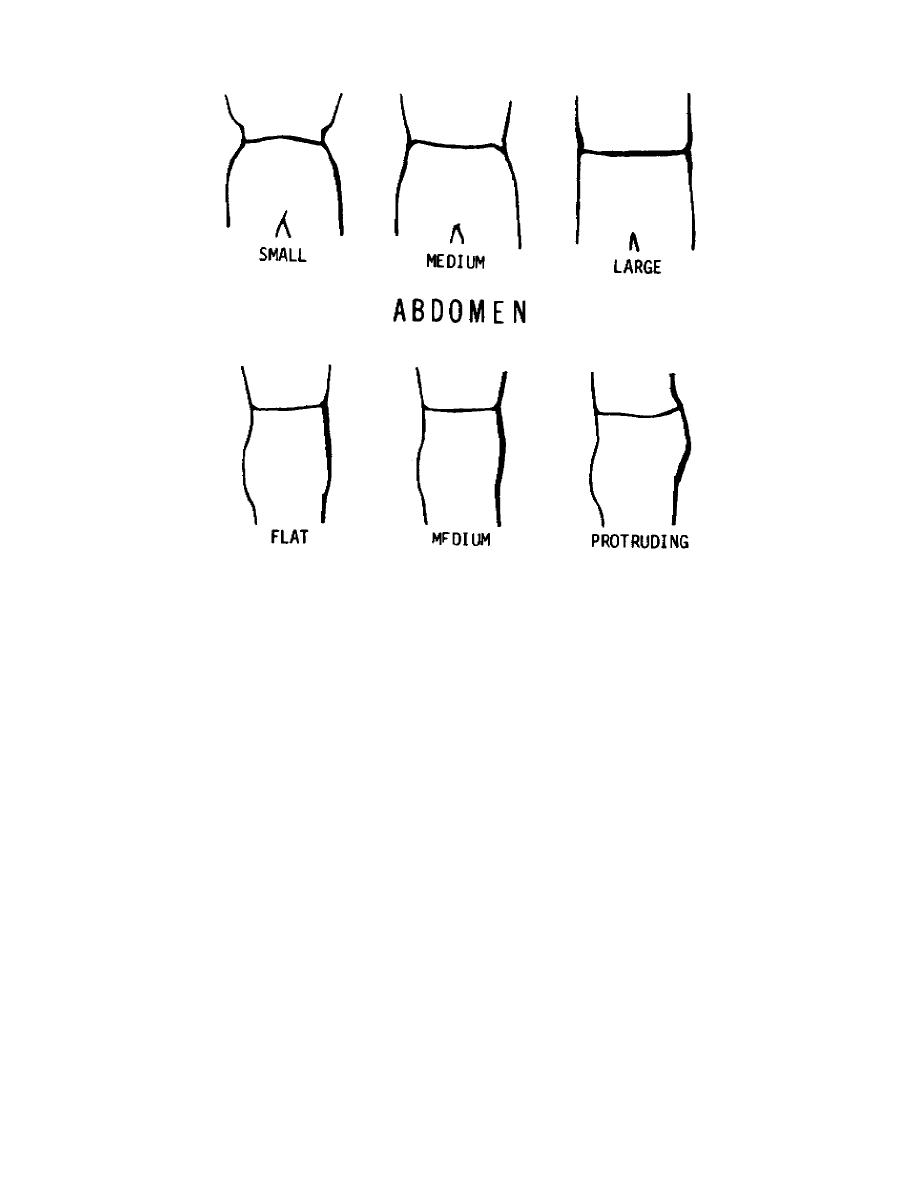
Figure 5-20.
The Waist and the Abdomen.
(g) Hips.
Broad, medium, or narrow, as seen from the front; small,
medium, or large, as seen in profile. In this connection, the observer should keep
in mind the basic differences between male and female.
(h) Legs.
Long, medium, or short in comparison to rest of the body
(average or medium legs combined with the hips constitute about half the body
length); straight, bowed (bandy), or knock-kneed; musculature as slight, medium, or
heavy.
(i) Feet. Small, medium, or large in relation to body size; deformities
and peculiarities, such as pigeon-toed, flatfooted, or clubfooted, should be
carefully recorded.
(j) Marks and scars.
Such identifying marks as birthmarks, moles,
warts, tattoos, and scars should be clearly described as to size, color, location
on the body, and shape.
(k) Speech.
The tone and manner of a person's speech may often be
important aspects of his description.
His habitual tone should be indicated as
low, medium, or loud; short or gruff, or by other qualities.
His manner of
speaking should be indicated as cultured, vulgar, clipped, fluent, broken English,
with accent (identified if possible); or non-English speaking (language specified
when possible); such peculiarities as stuttering, nasal twang, pronounced drawl, or
a mute condition should be stated and explained.
MP1016
5-24


 Previous Page
Previous Page
